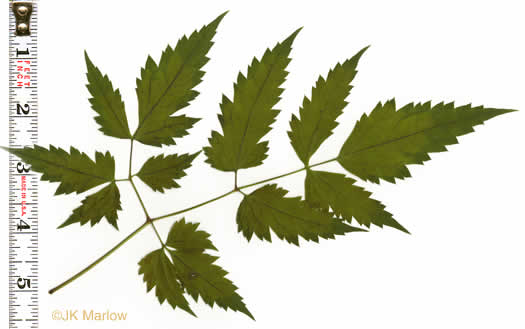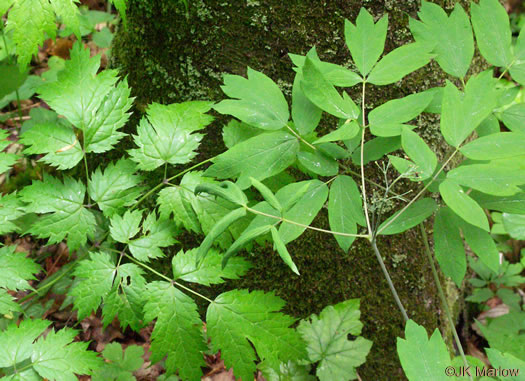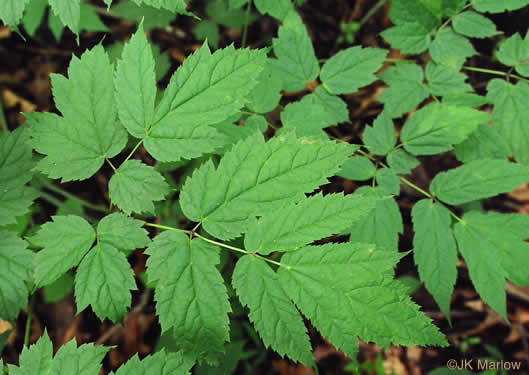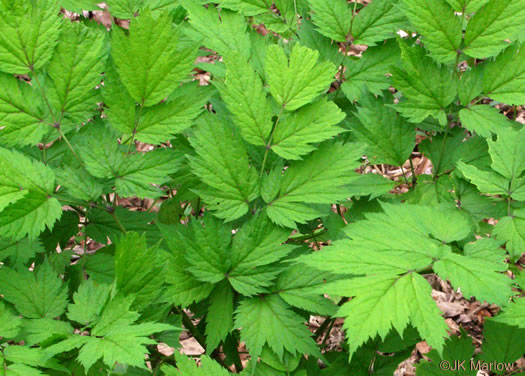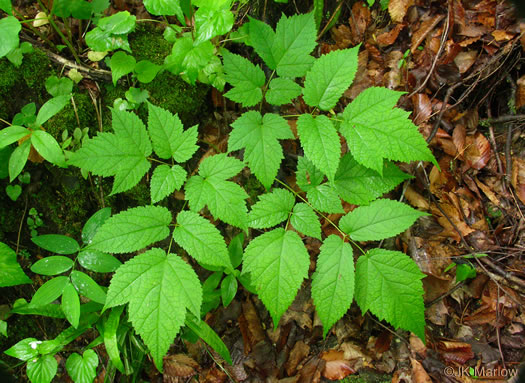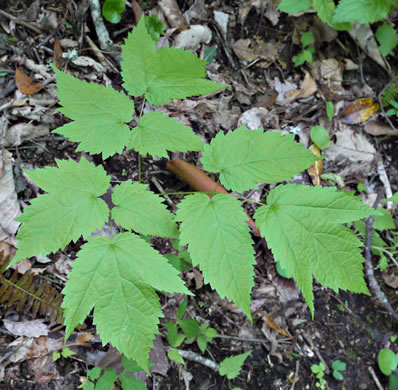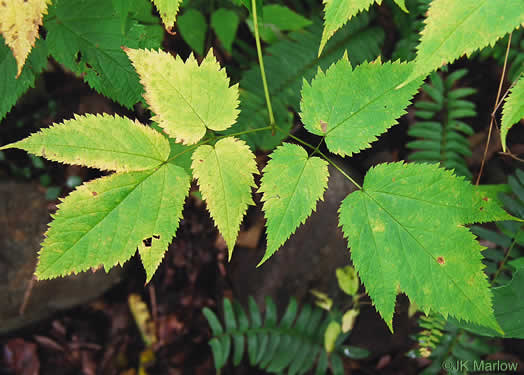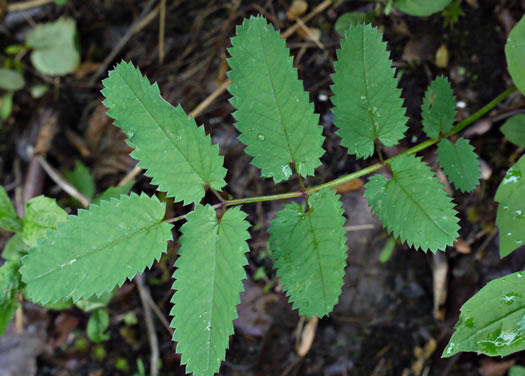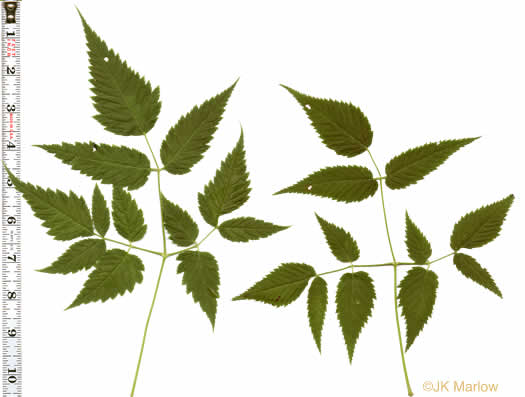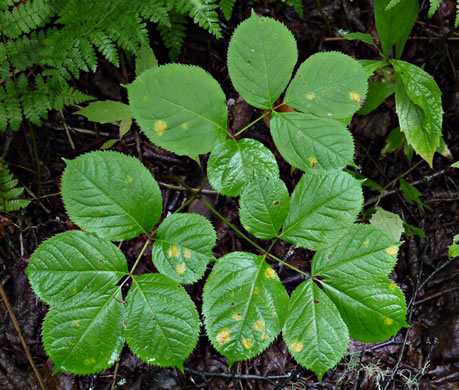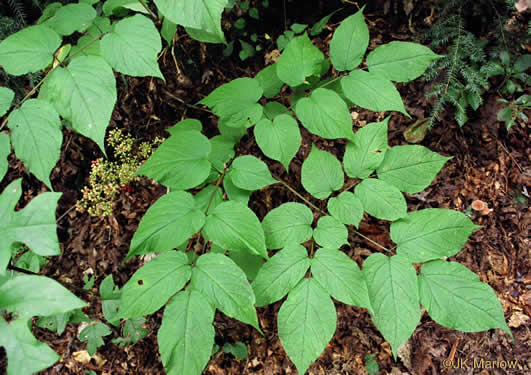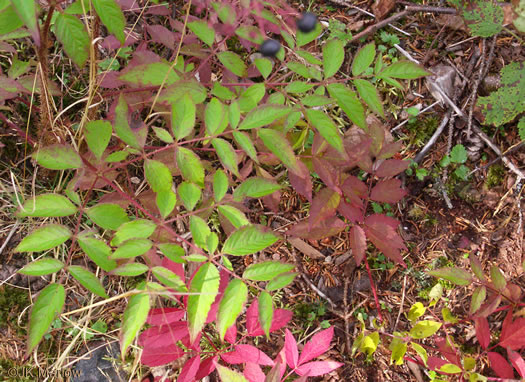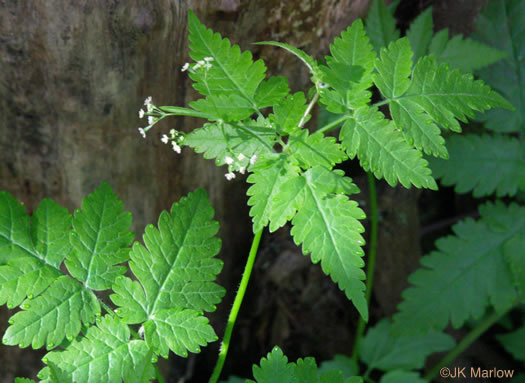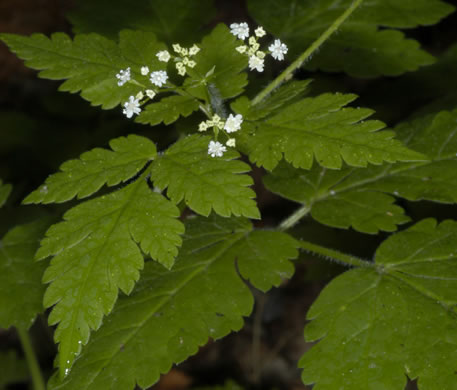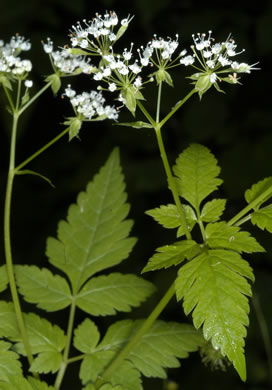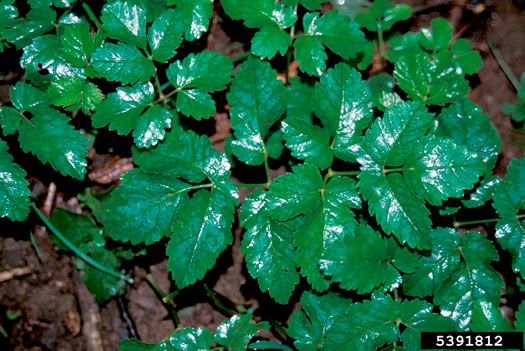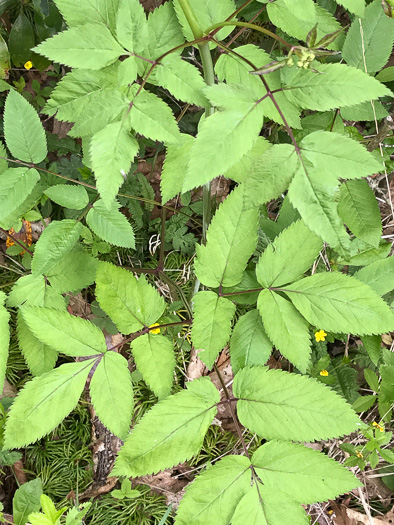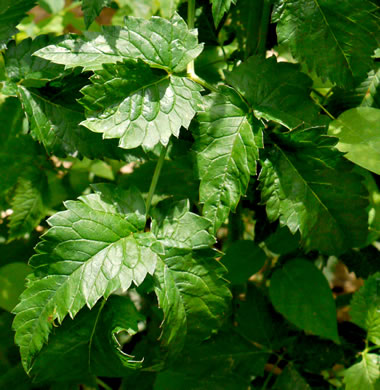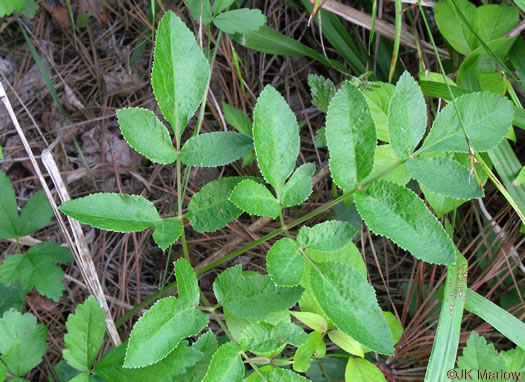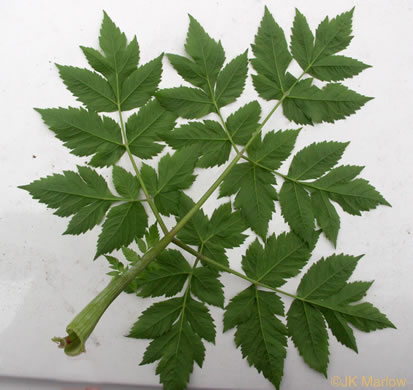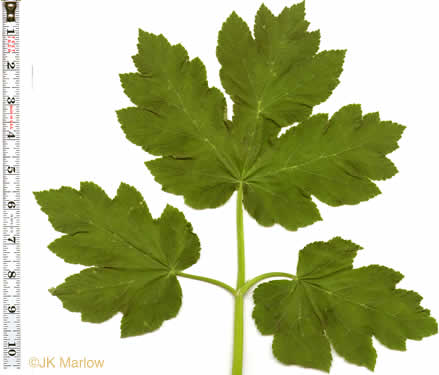Your search found 22 image(s) of compound leaves of woodland herbs, with toothed margins.
To see larger pictures, click or hover over the thumbnails.
To go to the plant's detail page, click its name.
 Doll's-eyes,
Actaea pachypoda
Doll's-eyes,
Actaea pachypoda
Actaea, Astilbe, Aruncus, Caulophyllum, & Aralia can be difficult to distinguish.
 Common Black Cohosh,
Actaea racemosa
Common Black Cohosh,
Actaea racemosa
Black Cohosh on the left; Blue Cohosh on the right.
 Common Black Cohosh,
Actaea racemosa
Common Black Cohosh,
Actaea racemosa
Black Cohosh on the left; False Goatsbeard on the right.
 Common Black Cohosh,
Actaea racemosa
Common Black Cohosh,
Actaea racemosa
Leaflets broad, coarsely toothed; terminal leaflet generally 3-lobed, per Wildflowers of Tennessee, the Ohio Valley, and the Southern Appalachians (Horn, Cathcart, Hemmerly, & Duhl, 2005).
 Mountain Black Cohosh,
Actaea podocarpa
Mountain Black Cohosh,
Actaea podocarpa
Terminal leaflet with 3 major veins arising from the base, per Weakley's Flora.
 Appalachian False Goatsbeard,
Astilbe biternata
Appalachian False Goatsbeard,
Astilbe biternata
Terminal leaflets are acuminate and usually 3-lobed with a cordate base, per Vascular Flora of the Carolinas (Radford, Ahles, & Bell, 1968).
 Appalachian False Goatsbeard,
Astilbe biternata
Appalachian False Goatsbeard,
Astilbe biternata
Leaves 2x ternately divided; terminal leaflet 3-parted; leaflets long-tipped, sharply toothed, per Wildflowers of the Atlantic Southeast (Cotterman, Waitt, & Weakley, 2019).
 Appalachian False Goatsbeard,
Astilbe biternata
Appalachian False Goatsbeard,
Astilbe biternata
Lateral leaflets ovate, elliptic, 3-lobed or lobed on one side, per Vascular Flora of the Carolinas (Radford, Ahles, & Bell, 1968).
 Canada Burnet,
Sanguisorba canadensis
Canada Burnet,
Sanguisorba canadensis
Leaves pinnate, with 7-15 sharply toothed leaflets, per Newcomb's Wildflower Guide (Newcomb, 1977).
 Eastern Goatsbeard,
Aruncus dioicus var. dioicus
Eastern Goatsbeard,
Aruncus dioicus var. dioicus
Leaflets resemble elm leaves; terminal leaflet is unlobed, per Wildflowers of Tennessee, the Ohio Valley, and the Southern Appalachians (Horn, Cathcart, Hemmerly, & Duhl, 2005).
 Wild Sarsaparilla,
Aralia nudicaulis
Wild Sarsaparilla,
Aralia nudicaulis
Has a single compound leaf with 3 primary forks, each with 3-5 leaflets, per Wildflowers of Tennessee, the Ohio Valley, and the Southern Appalachians (Horn, Cathcart, Hemmerly, & Duhl, 2005).
 Spikenard,
Aralia racemosa
Spikenard,
Aralia racemosa
Leaves pinnately compound or ternately and pinnately decompound, per Vascular Flora of the Carolinas (Radford, Ahles, & Bell, 1968).
 Bristly Sarsaparilla,
Aralia hispida
Bristly Sarsaparilla,
Aralia hispida
Lower stem beset w slender bristles, also several bipinnate cauline leaves, per Wildflowers of the Southern Mountains (Smith, 1998).
 Bland Sweet Cicely,
Osmorhiza claytonii
Bland Sweet Cicely,
Osmorhiza claytonii
Leaves to 1' long, often hairy, twice triple-compound, per Wildflowers of Tennessee (Carman, 2005).
 Bland Sweet Cicely,
Osmorhiza claytonii
Bland Sweet Cicely,
Osmorhiza claytonii
Umbels compound with hairy stalks. Flower petals longer than the styles, per Wildflowers of Tennessee (Carman, 2005).
 Aniseroot,
Osmorhiza longistylis
Aniseroot,
Osmorhiza longistylis
Egg-shaped leaflets deeply lobed & toothed. Stem nearly smooth (occ. hairy), per Newcomb's Wildflower Guide (Newcomb, 1977).
 Goutweed,
Aegopodium podagraria
Goutweed,
Aegopodium podagraria
Leaves arising from the rhizomes typically outnumber flower-bearing stems, per USDA Forest Service Weed of the Week (Northeastern Area).
 American Lovage,
Ligusticum canadense
American Lovage,
Ligusticum canadense
The straightish and toothless basal portion of each leaflet is distinctive, per Weakley's Flora.
 Water-hemlock,
Cicuta maculata var. maculata
Water-hemlock,
Cicuta maculata var. maculata
The veins of the leaflets end at notches (in Angelica they do not), per Wildflowers of the Eastern United States (Duncan & Duncan, 1999).
 Hairy Angelica,
Angelica venenosa
Hairy Angelica,
Angelica venenosa
Stem leaves dark green, thick, and compound. Leaflet margins toothed, per Atlantic Coastal Plain Wildflowers (Nelson, 2006).
 Mountain Angelica,
Angelica triquinata
Mountain Angelica,
Angelica triquinata
Leaves pinnately or bipinnately divided, the larger leaf segments ~3" long, per Wildflowers of Tennessee, the Ohio Valley, and the Southern Appalachians (Horn, Cathcart, Hemmerly, & Duhl, 2005).
 Cow-parsnip,
Heracleum maximum
Cow-parsnip,
Heracleum maximum
The large leaves are divided into 3 toothed, lobed, maple-like leaflets, per Wildflowers of the Blue Ridge Parkway (Alderman, 1997).

